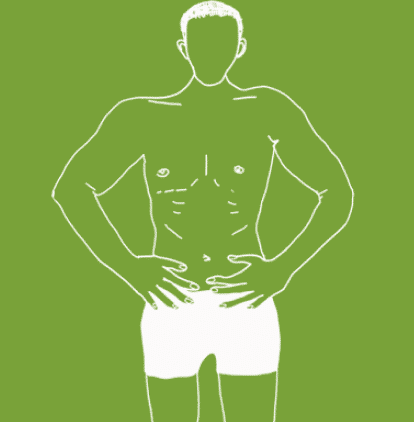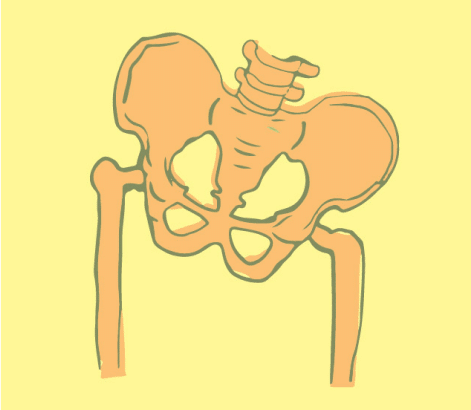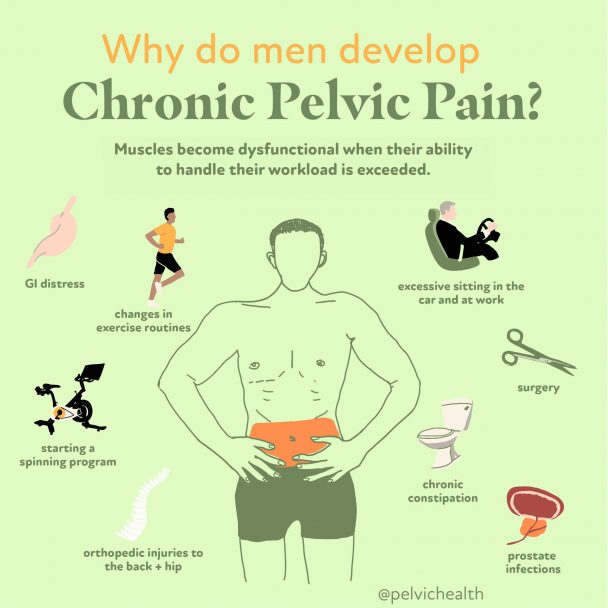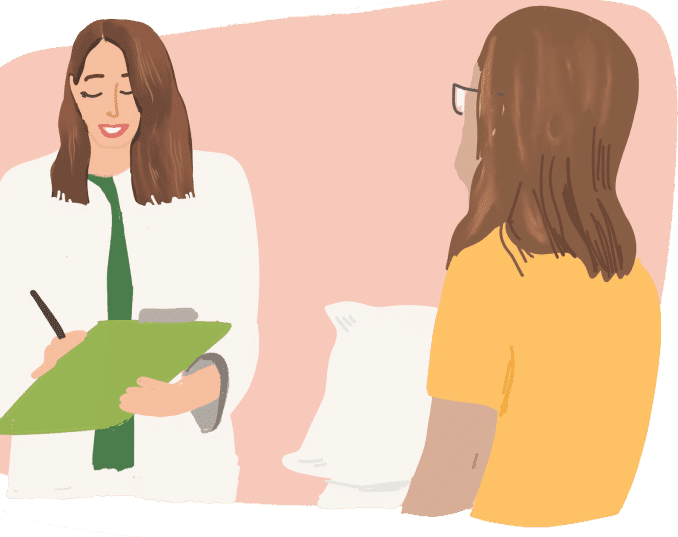

Typical Symptoms Men Experience Include:
- A persistent ache or sharp sensations such as burning or itching in the genital, anal, or perineal regions
- Pain exacerbated by sitting, exercising, or wearing restrictive clothing
- Issues with urination including hesitancy, urgency, and a diminished stream
- Discomfort associated with ejaculation, often in the scrotum, penis, or perineal area
- Erectile dysfunction symptoms and reduced ejaculation strength
- Digestive disturbances like constipation or abdominal bloating
- Symptoms may be triggered by ejaculation or occur randomly
- Pain may come and go or persist without relief
Oceanside residents struggling with these symptoms may find meaningful relief through pelvic floor physical and occupational therapy, which targets the condition at its source.
Typical Symptoms Men Experience Include:
- A persistent ache or sharp sensations such as burning or itching in the genital, anal, or perineal regions
- Pain exacerbated by sitting, exercising, or wearing restrictive clothing
- Issues with urination including hesitancy, urgency, and a diminished stream
- Discomfort associated with ejaculation, often in the scrotum, penis, or perineal area
- Erectile dysfunction symptoms and reduced ejaculation strength
- Digestive disturbances like constipation or abdominal bloating
- Symptoms may be triggered by ejaculation or occur randomly
- Pain may come and go or persist without relief
Oceanside residents struggling with these symptoms may find meaningful relief through pelvic floor physical and occupational therapy, which targets the condition at its source.

Associated Diagnoses
Chronic Pelvic Pain Syndrome/Male Pelvic Pain, Chronic Nonbacterial Prostatitis, Pudendal Neuralgia, Hard Flaccid Syndrome and Interstitial Cystitis/Painful Bladder Syndrome are all pain syndromes that cause pelvic pain due to pelvic floor dysfunction.

Associated Diagnoses
Chronic Pelvic Pain Syndrome/Male Pelvic Pain, Chronic Nonbacterial Prostatitis, Pudendal Neuralgia, Hard Flaccid Syndrome and Interstitial Cystitis/Painful Bladder Syndrome are all pain syndromes that cause pelvic pain due to pelvic floor dysfunction.

- Surgical trauma (vasectomy, benign prostatic hyperplasia (BPH) interventions, prostatectomy)
- Orthopedic injuries or other traumas (spine, hip, knee, and/or ankle injuries/pathology, accidents)
- Biomechanical or structural dysfunction (hip dysfunction, piriformis syndrome, scoliosis, leg length discrepancy)
- Excessive exercise or changes to exercise routine
- Excessive sitting
- Chronic constipation and straining
- Jelqing and/or attempts at gential enhancement or foreskin regeneration
- In rare cases, bladder, prostate, or sexually transmitted infections after successful resolution of infection
- The majority of men with pelvic pain, with or without urinary or bowel complaints, have pelvic floor dysfunction

Causes of Pelvic Pain
- Surgical trauma (vasectomy, benign prostatic hyperplasia (BPH) interventions, prostatectomy)
- Orthopedic injuries or other traumas (spine, hip, knee, and/or ankle injuries/pathology, accidents)
- Biomechanical or structural dysfunction (hip dysfunction, piriformis syndrome, scoliosis, leg length discrepancy)
- Excessive exercise or changes to exercise routine
- Excessive sitting
- Chronic constipation and straining
- Jelqing and/or attempts at gential enhancement or foreskin regeneration
- In rare cases, bladder, prostate, or sexually transmitted infections after successful resolution of infection
- The majority of men with pelvic pain, with or without urinary or bowel complaints, have pelvic floor dysfunction

Diagnostic Challenges
Men who experience pelvic pain often endure years of misdiagnoses—research shows that it can take up to seven years before receiving the right diagnosis. This is because their symptoms commonly overlap with those of prostate, bladder, or sexually transmitted infections. Rather than undergo the time-consuming testing process to verify these conditions, many medical providers default to prescribing antibiotics. Unfortunately, this approach can overlook the real cause: pelvic floor dysfunction. To make matters worse, few pelvic floor therapists are trained in treating men, further delaying effective treatment. At PHRC, we recognize this gap and have made it our mission to offer expert pelvic floor care tailored to men’s unique needs.
Many men living with pelvic pain are frequently misdiagnosed with “prostatitis” and are often given courses of antibiotics, even in the absence of an actual infection. However, mounting evidence has shown that more than 90% of men who report symptoms such as pelvic discomfort, urinary issues, or genital pain do not have a bacterial infection of the prostate. Instead, they typically fall under categories IIIa or IIIb of Chronic Pelvic Pain Syndrome (CPPS), as defined by the National Institutes of Health (NIH).
The NIH outlines five distinct categories of prostatitis:
Category I: Acute bacterial prostatitis – involves a sudden onset of severe urinary symptoms, often alongside fever and systemic bacterial infection.
Category II: Chronic bacterial prostatitis – marked by ongoing or recurring prostate infections, usually accompanied by repeat urinary tract infections.
Category IIIa: Inflammatory CPPS – involves chronic pain symptoms along with evidence of white blood cells in seminal fluid or expressed prostatic secretions.
Category IIIb: Non-inflammatory CPPS – presents with similar pelvic pain symptoms but without any signs of inflammation under microscopic evaluation.
Category IV: Asymptomatic inflammatory prostatitis – diagnosed when inflammation is detected in the prostate tissue despite the patient having no symptoms.
Diagnostic Challenges
Men who experience pelvic pain often endure years of misdiagnoses—research shows that it can take up to seven years before receiving the right diagnosis. This is because their symptoms commonly overlap with those of prostate, bladder, or sexually transmitted infections. Rather than undergo the time-consuming testing process to verify these conditions, many medical providers default to prescribing antibiotics. Unfortunately, this approach can overlook the real cause: pelvic floor dysfunction. To make matters worse, few pelvic floor therapists are trained in treating men, further delaying effective treatment. At PHRC, we recognize this gap and have made it our mission to offer expert pelvic floor care tailored to men’s unique needs.
Many men living with pelvic pain are frequently misdiagnosed with “prostatitis” and are often given courses of antibiotics, even in the absence of an actual infection. However, mounting evidence has shown that more than 90% of men who report symptoms such as pelvic discomfort, urinary issues, or genital pain do not have a bacterial infection of the prostate. Instead, they typically fall under categories IIIa or IIIb of Chronic Pelvic Pain Syndrome (CPPS), as defined by the National Institutes of Health (NIH).
The NIH outlines five distinct categories of prostatitis:
Category I: Acute bacterial prostatitis – involves a sudden onset of severe urinary symptoms, often alongside fever and systemic bacterial infection.
Category II: Chronic bacterial prostatitis – marked by ongoing or recurring prostate infections, usually accompanied by repeat urinary tract infections.
Category IIIa: Inflammatory CPPS – involves chronic pain symptoms along with evidence of white blood cells in seminal fluid or expressed prostatic secretions.
Category IIIb: Non-inflammatory CPPS – presents with similar pelvic pain symptoms but without any signs of inflammation under microscopic evaluation.
Category IV: Asymptomatic inflammatory prostatitis – diagnosed when inflammation is detected in the prostate tissue despite the patient having no symptoms.
Treatment:
How We Can Help You

In Oceanside, men dealing with chronic pelvic pain can benefit from seeing a pelvic floor physical and occupational therapists who understands the complexity of this condition. The first session includes an in-depth discussion of your health history, the symptoms you’ve experienced, and the success (or failure) of any previous treatment attempts. Many Oceanside patients feel they’ve been on a long journey before they finally get to us—and we understand that struggle.
The physical exam will evaluate your pelvic floor muscles, joints, connective tissues, nerves, and movement habits. After gathering this data, the therapist will explain how your symptoms likely developed and create a structured plan with specific goals for your recovery. Most patients in Oceanside come in for therapy once or twice weekly for around 12 weeks, supported by at-home exercises. Your therapist will also coordinate your progress with your broader care team. We’re here to help you feel seen, supported, and on track for better health.

Treatment:
How We Can Help You
In Oceanside, men dealing with chronic pelvic pain can benefit from seeing a pelvic floor physical and occupational therapists who understands the complexity of this condition. The first session includes an in-depth discussion of your health history, the symptoms you’ve experienced, and the success (or failure) of any previous treatment attempts. Many Oceanside patients feel they’ve been on a long journey before they finally get to us—and we understand that struggle.
The physical exam will evaluate your pelvic floor muscles, joints, connective tissues, nerves, and movement habits. After gathering this data, the therapist will explain how your symptoms likely developed and create a structured plan with specific goals for your recovery. Most patients in Oceanside come in for therapy once or twice weekly for around 12 weeks, supported by at-home exercises. Your therapist will also coordinate your progress with your broader care team. We’re here to help you feel seen, supported, and on track for better health.
How Can We Help You?
We invite you to share your thoughts or inquiries using the form below. Please make sure to enter your email address so we can provide a prompt response. Your privacy is our priority, and all submitted information will be kept strictly confidential.

Join The Newsletter. Win a copy of our book, “Pelvic Pain Explained!”
We love getting to know our website visitors. Please tell us a little bit about yourself and get the latest info via PHRC e-newsletter!
*Subscribers automatically eligible to win our book, “Pelvic Pain Explained.”
Pelvic Pain Explained is a deep dive into the reality of chronic pelvic pain—how it begins, why it’s often misunderstood, and the maze patients must navigate to find relief. It also brings to light the emotional burden of dealing with a hidden condition that can affect every part of life, from personal identity to relationships, often in ways that are difficult for others to fully grasp.


